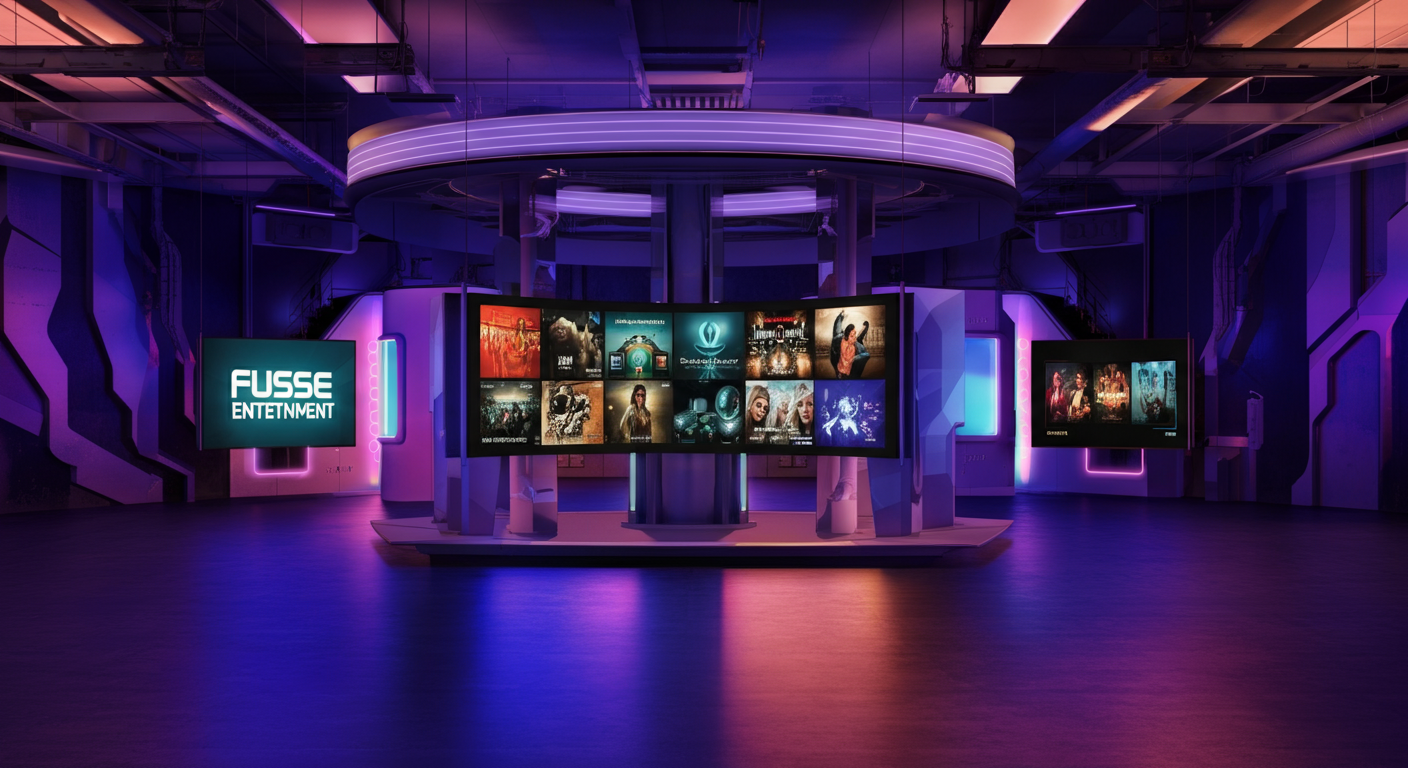In today’s fast-paced entertainment landscape, selecting the right video programming provider can make or break the customer experience in your business. Whether you own a bustling casino, a trendy bar, or a multi-location restaurant chain, choosing the perfect provider is crucial for enhancing customer satisfaction and creating an engaging atmosphere. As we move into 2025, businesses must adapt to the ever-evolving world of commercial video programming to stay competitive.
Imagine walking into your favorite restaurant only to find outdated content playing on the screens. It can be a letdown for customers seeking immersive experiences. With the myriad of options available, the challenge lies in selecting a provider that not only meets your entertainment needs but also aligns with your business goals. The selection of a video programming provider is no longer just about channel packages; it’s about creating a tailored experience that captivates your audience.
At DLM Media, we understand the intricacies involved in making this choice. Our mission is to deliver high-quality, hassle-free video programming solutions that cater to diverse industries, from hospitality to automotive dealerships. Our commitment to exceptional customer service and reliable signal delivery ensures that your patrons enjoy their favorite shows without interruption.
This guide will walk you through the essential considerations for choosing the right video programming provider in 2025. We’ll delve into the importance of curated entertainment experiences, explore the latest industry trends, and share tips on enhancing your customer experience. Stay with us as we navigate the complexities of video programming provider selection and help you make an informed decision that elevates your business.
Understanding Video Programming Provider Options in 2025
In 2025, the landscape of video programming providers is more diverse than ever, offering businesses a plethora of choices to enhance their customer experience. Whether you’re running a bustling casino or a cozy restaurant, understanding the various provider options is crucial for making an informed decision. This section explores the different types of video programming providers available today, including traditional cable, satellite, and the rapidly growing virtual multichannel video programming distributors (vMVPDs).
As businesses aim to create engaging atmospheres, selecting the right provider becomes a strategic decision. From traditional cable services to modern streaming solutions, each option comes with its own set of advantages and challenges. By examining these options, you can better align your choice with your business goals and customer expectations.
Traditional Cable and Satellite Providers
Traditional cable and satellite providers have been the backbone of video programming for decades. These providers offer a wide range of channels and are known for their reliability and extensive infrastructure. However, they often come with higher costs and long-term contracts, which may not be ideal for all businesses.
Some popular cable providers include Comcast and Spectrum, while satellite options are led by companies like DISH Network. Despite their established presence, these providers face challenges from newer, more flexible options. According to the NCTA, traditional TV viewing has dropped below 50% as more consumers turn to alternative solutions.
Virtual Multichannel Video Programming Distributors (vMVPDs)
vMVPDs represent a modern approach to video programming, delivering TV content over the internet without the need for traditional cable infrastructure. These platforms, such as Hulu + Live TV and YouTube TV, offer flexibility and cost-effectiveness, making them attractive for businesses looking to cut costs while maintaining quality content.
The rise of vMVPDs has been significant, with AppsFlyer noting that their subscriptions in the US crossed 14.2 million in 2021. These services provide access to a broad range of channels and often include features like cloud DVR, enhancing the viewing experience. However, the competition in this space is intense, and businesses must carefully evaluate their options to find the best fit.
Comparing the Options: Advantages and Disadvantages
To help businesses navigate the selection process, a clear comparison of the advantages and disadvantages of each provider type is essential. Here’s a breakdown:
- Cable and Satellite: Reliable service and extensive channel offerings, but often expensive with long-term contracts.
- vMVPDs: Flexible and cost-effective, with no need for physical infrastructure, but face intense competition and evolving market dynamics.
By understanding these differences, businesses can make strategic decisions that align with their specific needs and customer preferences. As the market continues to evolve, staying informed about the latest trends and options will be key to maintaining a competitive edge.
Key Factors to Consider When Selecting a Provider
Choosing the right video programming provider is a pivotal decision for businesses aiming to enhance their customer experience. As we delve into 2025, the landscape of video programming is more competitive than ever, with numerous providers offering diverse solutions. Understanding the critical factors that influence this decision can help businesses make informed choices that align with their goals and customer expectations.
When selecting a provider, businesses should evaluate several key aspects such as cost, content variety, customer support, and technological compatibility. These elements can significantly impact the effectiveness of the chosen solution and the overall satisfaction of your clientele. Let’s explore these factors in detail to guide your decision-making process.
Cost and Pricing Models
Cost is often a primary consideration for businesses when selecting a video programming provider. Providers offer various pricing models, including subscription-based services, pay-per-view options, and bundled packages. It’s essential to compare these models and understand the long-term financial implications for your business.
For instance, traditional cable providers may require long-term contracts with higher upfront costs, while virtual multichannel video programming distributors (vMVPDs) often offer more flexible month-to-month subscriptions. Analyzing these options will help you align your selection with your budgetary constraints and financial goals.
Content Variety and Quality
The variety and quality of content offered by a provider are crucial in creating an engaging atmosphere for your customers. Businesses should assess the range of channels, genres, and exclusive content available through each provider. This evaluation ensures that the programming aligns with the preferences of your target audience.
For example, a restaurant might prioritize sports and entertainment channels to attract patrons during game nights, while a dental office may prefer family-friendly or educational content. Understanding your audience’s preferences will guide you in selecting a provider that enhances the customer experience.
Customer Support and Service Reliability
Reliable customer support is vital for addressing any issues that may arise with your video programming service. Providers should offer robust support channels, including phone, email, and live chat, to assist with troubleshooting and service inquiries.
Additionally, assessing a provider’s track record for service reliability, such as signal stability and uptime, can prevent disruptions that might negatively impact your business operations. Partnering with a provider known for exceptional service reliability, like DLM Media, ensures that your customers enjoy uninterrupted viewing experiences.
- Evaluate cost structures and choose a model that fits your budget.
- Ensure the content variety aligns with your target audience’s preferences.
- Check the provider’s customer support options and service reliability.
By considering these key factors, businesses can make informed decisions that not only meet their entertainment needs but also enhance customer satisfaction and engagement. For more insights on optimizing your business’s entertainment solutions, explore additional resources on our website.
Future Trends in Video Programming for Businesses
The landscape of video programming is rapidly evolving, and businesses must stay ahead of the curve to remain competitive. As we look towards 2025, several key trends are shaping the future of video programming, offering new opportunities and challenges for businesses. Understanding these trends is crucial for making informed decisions in video programming provider selection.
Innovations in technology and changing consumer preferences are driving these trends, with a focus on creating more interactive, personalized, and intelligent viewing experiences. Let’s explore some of the most significant trends that businesses should consider when choosing their video programming provider.
Interactive Content and Engagement
Interactive content is revolutionizing the way businesses engage with their audiences. This trend allows viewers to interact with the content they are watching, providing a more immersive experience. For instance, viewers can participate in live polls, quizzes, or even make purchasing decisions directly from the screen.
Businesses can leverage interactive content to enhance customer engagement and drive sales. According to a report by Deloitte, interactive video content can increase viewer engagement by up to 47%. This trend is particularly beneficial for industries like retail and hospitality, where customer interaction is key to success.
AI-Driven Recommendations
Artificial intelligence (AI) is playing a pivotal role in transforming video programming. AI-driven recommendation systems analyze viewer preferences and behavior to suggest personalized content. This not only enhances the viewing experience but also increases customer satisfaction and retention.
For businesses, implementing AI-driven recommendations can lead to a more tailored entertainment experience for their customers. A study by McKinsey highlights that personalization can boost sales by 10% to 30%, making it a valuable tool for businesses aiming to enhance their customer experience.
Personalized Viewing Experiences
Personalization is becoming a cornerstone of modern video programming. Consumers now expect content that aligns with their individual preferences and interests. This trend is driving businesses to adopt technologies that allow for customized viewing experiences.
By offering personalized content, businesses can create a more engaging environment for their customers. According to PwC, 72% of consumers only engage with marketing messages that are tailored to their interests. This trend underscores the importance of selecting a provider that offers advanced personalization features.
As businesses navigate the complexities of video programming provider selection, staying informed about these future trends is essential. By embracing interactive content, AI-driven recommendations, and personalized experiences, businesses can enhance their customer engagement and satisfaction, ultimately driving growth and success in 2025 and beyond.
Maximizing Your Business’s Video Programming Potential
As we journey through 2025, the importance of selecting the right video programming provider cannot be overstated. This decision is pivotal for businesses aiming to elevate the customer experience and create vibrant, engaging atmospheres. Throughout this guide, we’ve explored the diverse landscape of video programming options, from traditional cable and satellite providers to the innovative virtual multichannel video programming distributors (vMVPDs). Each option presents unique advantages and challenges, and understanding these is key to making an informed decision.
Choosing the right provider involves more than just evaluating channel packages. It requires a strategic approach that considers cost, content variety, customer support, and technological compatibility. By prioritizing these factors, businesses can ensure they select a provider that not only meets their entertainment needs but also aligns with their broader business goals. As highlighted, the rise of interactive content and AI-driven personalization are shaping the future of video programming, offering exciting opportunities to enhance customer engagement.
- Evaluate Cost Structures: Choose a pricing model that fits your budget and offers flexibility.
- Prioritize Content Variety: Ensure the programming aligns with your audience’s preferences.
- Assess Customer Support: Opt for providers known for reliable service and robust support.
Now is the time to take action. We encourage businesses to critically evaluate their current providers and consider exploring new options that offer enhanced capabilities. By doing so, you can stay ahead of industry trends and ensure your business remains competitive. For more insights and personalized advice, visit our website to explore how DLM Media can help you achieve your entertainment goals.





